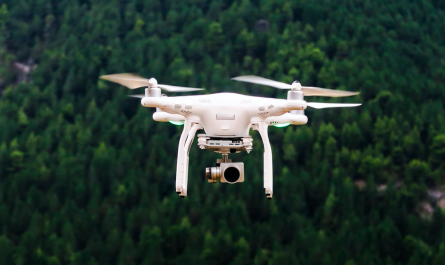Innovative approaches and outside the box thinking are key factors when it comes to a transformation. This article is about how DIFFAIR – a young, fair fashion label from Zürich – is using both these to contribute to a more sustainable fashion industry. Andrej Krajnc joined DIFFAIR in September and is one of the devotees behind the start-up. He oversees marketing and communications and talks about how it all started and how they launched their first mini collection, as well as sharing what he thinks is needed to change the industry for the better.
DIFFAIR is positioned as an activist company. The fashion industry’s widespread social and environmental destruction motivated its founders to act. Governments’ slow action and the large fashion brands’ reluctance to listen to consumer concerns, made them realize that the best strategy for invoking change was to show what can be done. They achieve this by producing DIFferent and FAIR fashion.
Their aim is to revive the traditionally high-quality, and once very successful, Swiss fashion industry. In the 18th century, Switzerland’s home industry gained a position of world power in textiles, driven by the growth of mousseline weaving, printing and embroidery. But by around 1965, the Swiss textile industry had begun to decline. Due to its higher production costs, Switzerland started to lose competitiveness compared to other countries, particularly those which could process their own cotton (Turkey, Brazil, Pakistan, Peru) or had lower labor costs (South Korea, Taiwan, Thailand, Indonesia).
Who are the people behind DIFFAIR and what motivated them to start a fair fashion label?
Valentina and Daniel are the founders of DIFFAIR. Valentina has a background in art history, and Daniel has worked in physics and banking. The couple took part in a business course with StartupCampus, during which they had to develop a business plan. This business plan laid the foundations for DIFFAIR.
They wanted to create a fair fashion label because they both felt that, nowadays, people no longer value their clothes. They wanted to address the issue that, in our throw-away culture, consumers are unaware of how much work goes into creating a new fashion piece; it involves a huge production chain with multiple production steps.
Do you know where Daniel and Valentina started, in terms of developing their business idea?
Their original idea was to start a label producing and delivering dressmaking patterns, so that people could produce their clothes themselves. They thought that consumers would see how much work was involved and start to cherish every piece of clothing. But they were soon forced to realize that not many people had the necessary sewing skills or machines, and therefore the market was too small. From this, they decided to offer readymade clothes.
Which then led to the business model you work with today, what is your approach?
Our client chooses a garment and we adapt the pattern to their body shape and size. After this, the pattern is uploaded to an automatic cutting machine, which cuts the fair and sustainable fabric, precisely and efficiently, to size. The cut pieces are then sent to an independent tailor, in our network around Switzerland, who sews them together and sends the finished garment directly to the client.
Furthermore, transparency is very important to us. It is something that sets us apart from many conventional and sustainable labels. Consumers are exposed to many empty promises, and they have no other choice but to trust in what brands tell them. One approach to combatting empty promises, is to be completely transparent about everything: the process, the suppliers, the raw materials and the costs.
In our first collection, we revealed all our suppliers and costs. Our customers can find the information for all our garments online. We will also have an individual code for every item of clothing, so that the customer can check this information.
How do you handle the customization of the clothes?
The first DIFFAIR collection has a casual look that fits many body types. But we work with a matrix system for customizing as much as possible. This means that we not only offer standard sizes like S, M and L, we also adapt the garment’s length to our customers’ height. In the future, we plan to get the customer’s exact measurement through an easy to use photo-software.
We have an on-demand approach, instead of standardized production. Our aim is move away from the industry standard in which a set number of pieces is produced, and half of them end up on sale or in landfill. We only produce what is demanded.
Sustainability has multiple layers: social, ecological and economical. Where is your focus?
Our focus is on the social part. We want our production to be fair. Our business model is to produce sustainable designer fashion locally. Consequently, we work with local designers and whenever possible, with suppliers from Switzerland or nearby countries, like Austria, Germany and Italy.
The challenge here is finding the raw materials. For example, cotton is not usually produced in Europe. So, we rely on organic cotton production or raw materials from Europe. We used Tencel lyocell for the trousers in our first collection, which is a cellulose fiber produced from wood. Tencel is a trademark owned by an Austrian company, Lenzing.
Neither of the two founders has a background in the textile industry. How did they manage that?
For both of them, it was their passion to offer a sustainable fashion solution that inspired them to move into this field. But as they were newbies in the fashion industry, acquiring the necessary know-how and knowledge has been challenging. Daniel has spent a lot of time researching and reading about these things. It started with incidental things, like the import process and regulations.
As soon as they had a clear vision of the business model, they started to research what know-how they would need for their team. They then partnered with two industry experts. Noga, who has recently finished her studies in textiles and design at the Schweizerische Textilfachschule and Susanne, who has her own pattern design business. In addition, they worked with independent fashion designer Esther Annen, known for her own label, Klamott, to design the first DIFFAIR collection.
You already mentioned some challenges with DIFFAIR, were there others?
One of the biggest challenges was finding the right suppliers. First, there are not yet many that are certified. Daniel and Valentina visited several textile fairs to find certified suppliers and see what kind of textiles they had and whether they would suit the collection. Plus, it is essential that the textiles match the defined sustainability criteria.
Second, most textile suppliers are focused on selling big batches. They are usually not interested in working with a company that only buys a small amount of fabric. Naturally, as we had just started, we did not buy big batches. Hence, we were dependent on the goodwill of suppliers who supplied us with small quantities, because they normally only start production for a minimum of 500 or 1,000 meters.
We had one advantage when we started talking to the suppliers; our concept was straightforward, and we had a storyline that we could sell. Plus, the collection’s designs were ready, so we knew exactly what to ask for. The suppliers understood our brand, so they were more willing to make an exception and supply us with smaller orders.
You did a crowdfunding campaign through Kickstarter, to realize your first mini collection. How did it go and was the collection profitable in the end?
The crowdfunding campaign ended in April and we raised over CHF 15,000. We got 101 supporters, most of whom will now receive a unique, designer piece from the first DIFFAIR collection.
We managed to cover our direct costs such as the materials, textiles, machinists, designer, delivery, etc. but our overhead is not yet fully covered. As we are not yet financed, we can only produce a small number of pieces. Our team is still working on a voluntary basis and we invest our free time in DIFFAIR. We are not yet at the point, where we can pay ourselves a salary.
What do you think – who is the DIFFAIR customer?
The customer we have in mind, is an urban person who is interested in a sustainable lifestyle. At the present time, conscious consumption can be perceived as a status symbol. Thus, we imagine our customer is someone who is willing to invest more in one piece of clothing, rather than buying a lot of cheaper items.
Finding our customers was also a challenge during the crowdfunding campaign. When you start such a campaign, you begin with all your friends and families who like your idea and support you. But as soon as your circle is served, you need to go out and find other customers.
We were able to increase our popularity through blogs and magazines that started to write about us and shared our story on social media. We were fortunate as our story leveraged well, even blogs that we hadn’t contacted, wrote about us.
What was interesting is that the vegan community is also interested in us. Although we do not consider this to be our unique selling point, we don’t use any animal products in our collection.
What is your vision for DIFFAIR?
One of the next steps is to find an investor, so that we can realize further collections and work on making DIFFAIR profitable. Currently, we are still using the STF school’s automatic cutter. We want to obtain our own cutter as soon as we have an investor.
We do not think that our business model represents a disruptive model that will change the whole fashion industry instantly. But we do know that, with it, we can provide a fair fashion solution for the Swiss market. Switzerland, with its high labor costs, is one of the most challenging markets in which to produce a fashion collection. Therefore, we are confident that a business model that works here, can be adapted to other countries.
What do you think is needed to change fashion consumers’ mindset towards more sustainable, fashion consumption?
It helps that fair fashion is no longer exclusively ideological. More labels have now started to produce fair fashion, which is not only fair but also meets the taste of fashion enthusiasts. These consumers want to buy clothes that look good and are still sustainable.
Society is already talking a lot more about social fairness and environmental issues, but more awareness is still needed. Through this, more people will obtain knowledge about their clothing and give it the value it deserves. The bigger the discussion about the issues, the stronger the consumer demand for fairly-produced products.
Sources:
https://www.diffair.ch/en/about
https://www.nzz.ch/article7RW2D-1.507653?reduced=true
https://www.lenzing.com/de/produkte/tencel-tm/
http://www.klamott.ch/
For regular updates, follow #FAFAZH and @fairfashionzh on Instagram!



